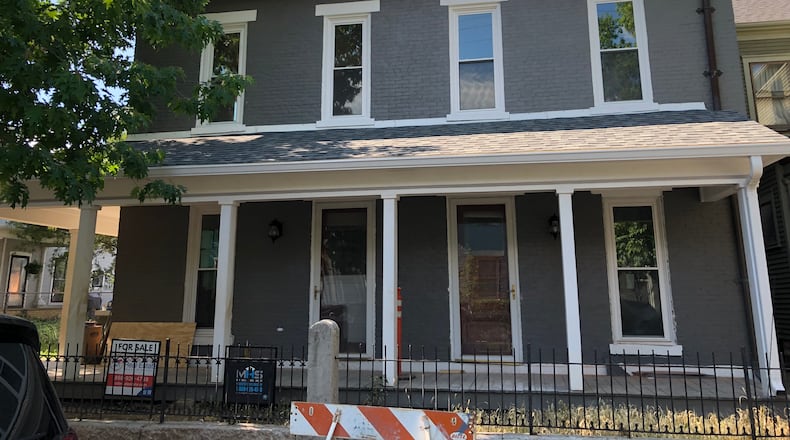“I need a way for the commission to work together with people rather than fighting all the time,” he told the Landmark Commission board members at their meeting Thursday night.
Members of the Landmark Commission took Korman to task for making changes to the property that were unauthorized and deviated from the plans the commission previously approved.
“You spent your time coming to this meeting, and we spent our time evaluating and giving feedback, and we approve one thing and you install something else,” said Alex Heckman, a commission member. “Certainly it’s frustrating, but it’s also a bit puzzling: I don’t know if you didn’t think there’d be follow-ups, inspections or what, but you can’t get one thing approved and then install something different.”
MORE: ‘Blind Bob’ got in trouble over a door. That can happen in historic districts.
Korman is renovating a residential building on Green Street to turn it into two condominiums. In May 2017, he received approval from the Landmark Commission to renovate two rear additions and brick in a side door.
But in April, the Landmark Commission sent him a letter denying his request for five modifications after he “veered from the approved plans” and made changes to the house without prior approval from the commission.
Korman replaced a half-glass side door with a full-glass door, made changes to windows and installed a different rooftop fence than what was approved, according to the board. And he didn’t install roof brackets on the rear addition.
Korman recently appeared before the commission to appeal a few of the denied modifications and submit plans to address the others.
He questioned why he had to install a half-glass door. He said he believed it constituted new construction not subject to historic regulations and said the half-glass door doesn’t look good.
MORE: Blind Bob’s owner in legal trouble after he replaces his home’s door
Commission member Scott Sliver said how it looks is a matter of opinion and isn’t the problem. He said the door he installed is not historic.
“Our job,” he said, “the role we have as a board, is to make sure that what is done to a home is historically appropriate.”
At one point, Korman told the commission he wanted more proof that installing a new door violated historic regulations.
“There’s going to be an attorney involved,” he said. “I’m not playing around.”
He said he did not understand why he had to meet certain requirements on windows on the home when no one can see them.
Commission member Fred Holley told Korman that buying a home in a historic district comes with certain commitments, and he should know that by now, especially after the commission approved his renovation plan.
“If we gave everybody everything that they wanted, we wouldn’t have any historic districts,” Holley said.
Korman did at times apologize for not following the process and said he should have come in and requested the modifications before he made them.
At the end of the discussion, the commission approved a major certificate of appropriateness but with conditions, including that Korman paint the rooftop privacy fence another color, cut the fence at an angle, replace the side door and install brackets.
MORE: Dayton faces deadline on potential loss of $3.2M in federal funds
About the Author

